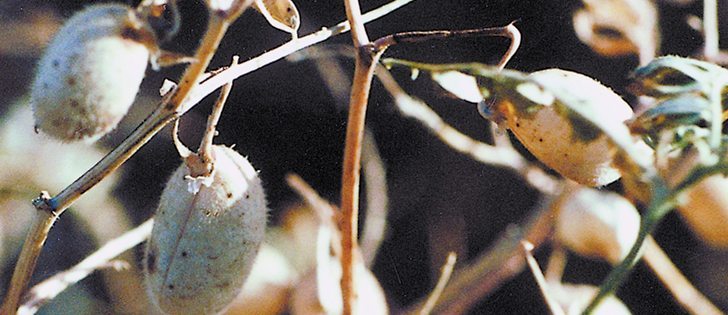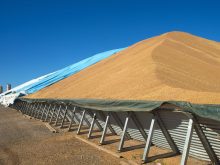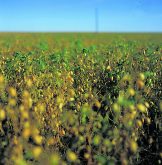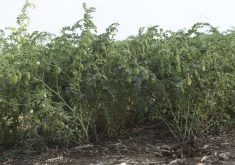Decline in acres possible Late spring seeding and wet conditions may have growers looking at other options
Chickpea movement has been poor in 2012-13, which may explain why growers could be shying away from the crop this spring.
Statistics Canada reported 111,000 tonnes in stock as of March 31, up from 47,000 tonnes the previous year.
“We buy that number. It makes sense to us,” said Lionel Ector, president of Diefenbaker Seed Processors Ltd.
The company from Loreburn, Sask., is a spot buyer of chickpeas and other pulse and special crops.
“It sure feels like there is more available of good quality (chickpea) product at this point in time than there was last year,” he said.
Read Also

Government, industry seek canola tariff resolution
Governments and industry continue to discuss how best to deal with Chinese tariffs on Canadian agricultural products, particularly canola.
The stocks report suggests 34 percent of available chickpea supply has been moved during the first eight months of the crop year compared to the five-year average of 48 percent, according to Stat Publishing.
Carryout would still be 68,800 tonnes if the pace picked up and disappearance met the five-year average during the final four months of the crop year.
That would still be higher than Agriculture Canada’s estimate of 60,000 tonnes and much higher than the previous year’s 11,000 tonne carryout.
Ector isn’t overly concerned about that level of ending stocks because the vast majority of chickpeas grown in Canada are kabuli types and the market for kabulis is large and global.
“That (supply) can stick around for a while or it can disappear in a very short period of time,” he said.
All it takes is a production problem in a major chickpea consumer or exporter.
“It’s extremely dry in Australia right now and they had some problems with frost earlier,” said Ector.
Statistics Canada is forecasting a 14 percent decline in Canadian chickpea acres this spring.
There have been anecdotal reports of growers abandoning the crop this spring because of seeding delays. Chickpeas require a long growing season, especially kabuli chickpeas.
Ector said it’s too early to write off the crop. Seeding is just getting under way in his part of Saskatchewan, which is a prime region for special crops.
There is still time to get the crop in the ground before the Saskatchewan Crop Insurance Corp.’s May 21 seeding deadline.
The wet spring is another consideration. Chickpeas don’t like wet weather, but it was extremely dry southwest of Loreburn last fall, where many chickpeas are grown, said Ector.
That said, he agreed with Statistics Canada’s forecast for an acreage contraction. He thinks the crop will lose ground to canola, wheat and other cereals.
Chuck Penner, an analyst with LeftField Commodity Research, believes chickpeas may also be facing stiff competition from another pulse crop.
“Some of the strength that we’ve seen in the last little while in lentils may help drain some of those acres,” he said.


















